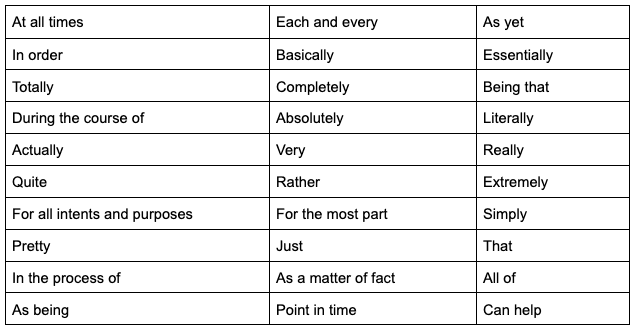How to improve writing skills: Crucial strategies to write better
Tempo Team
In an era of texting and videoconferencing, it may seem like business writing is no longer a critical skill. Understanding resource allocation is far more practical than knowing when to use the Oxford comma, right?
Not quite. Writing well is still a vital project management skill. Successful product delivery hinges on clear communication with your team and stakeholders. That means taking steps to write better.
Writing isn’t a skill you master; it’s an ongoing process that even the most talented wordsmiths continuously refine across their lifetime. It may seem intimidating, but learning how to improve your writing skills means never fearing a blank page again.
Why solid writing skills make a difference for project managers
Project management thrives on communication, mainly through the written word. The job demands significant documentation, from project plans and RACI matrices to weekly status reports. Good writing increases your effectiveness.
Concise, well-written project documentation gets everybody on the same page (pardon the pun), saving valuable time. You won’t have to address numerous requests for clarification or slow down meetings rehashing details that should have been apparent in the project plan.
The proliferation of remote project teams made written communication even more essential. Team members may work in different time zones, limiting availability for a quick chat over Slack or Zoom. Remote workers must find the answers they need within the project’s documentation. Otherwise, they could spend days executing a task incorrectly, risking increased costs and missed deadlines.
Effective written communication is the foundation of project success. As project manager, you are responsible for maintaining clarity.
9 tips to improve your writing skills
Business writing doesn’t require moving prose. It’s about sharing clear and concise information with the reader. Even if you’ve never had a complaint, these writing tips prove there’s always room for improvement:
1. Start with the basics
You don’t need to enroll in an advanced writing course to become a better writer. However, you should review the basics to brush up on grammar rules, spelling, and punctuation. Proper English grammar helps you avoid confusion, and clear and accessible text will convey your intended message precisely.
Strunk and White’s The Elements of Style is an invaluable resource for learning the basics of good writing. If you prefer online writing tools, bookmark Grammar Girl, Grammarly, and the Merriam-Webster dictionary.
2. Plan before you write
You wouldn’t start a project without a plan. The same is true of writing. As with project planning, your first task is to define your target users or audience. Ask yourself the following questions:
Who am I writing for?
What do I want them to learn?
What do I want them to do?
The answers to these questions establish the purpose of your writing. If you aren’t sure, step back and seek insight from others.
With answers in hand, it’s time to draft the outline. When confronted with a blank page, you may be tempted to fill it with every possible detail. Although a firehose technique might make writing easier, this type of brain dump can be counterproductive, requiring hours of editing to streamline text into a cohesive format.
An outline provides the framework for your words. It plots content logically so you can transition between topics without getting bogged down in unnecessary details or awkward segues. Ultimately, it keeps your writing relevant and focused on your audience, helping them engage with your message.
3. Practice concision
Colleagues and stakeholders are busy. They don’t have time to cut through flowery language to ascertain your point. Begin your correspondence with the main point and dedicate the introductory paragraph to summarizing the situation and your goals.
If you get stuck, use the bottom line up front (BLUF) technique. BLUF launches the article with critical information. Once you hook the reader, you can follow up with context, reasoning, and examples, encouraging them to keep reading until the conclusion.
Another way to tighten your writing is to remove filler words from your vocabulary. The following words and phrases may dilute the power of your writing:

If a sentence makes sense without it, cut the word. Once finished, you can further streamline your writing by axing unnecessary adjectives and adverbs and converting the passive voice to active.
4. Proofread
Don’t hit “Send” or publish your work the second you finish. Instead, build time into your writing process to proofread your work. In addition to minimizing filler words, a proofreading routine can help you catch other errors, big and small. Here are the essential steps:
Take a break: Step away from your writing before attempting to proofread. Ideally, you should leave it for a day, but that may be unrealistic. Allocate at least 20 minutes – long enough for a quick walk or a coffee – so you can review your text with fresh eyes, helping you spot errors.
Start with the easy fixes: You don’t have to polish your first draft in one pass. Instead, start by correcting spelling errors and adding strong verbs in place of weaker ones. You’ll develop a rhythm as you read through your work. By clearing away distractions, you can focus on more significant problems, such as confusing sentence structures and abrupt transitions.
Read your writing out loud: Writing is like composing music; you can’t tell if a piece is any good unless you hear it. Awkward word choices, clumsy transitions, and monotonous sentence structures become obvious when read aloud. Short sentences create a staccato beat that can emphasize crucial points. Long sentences produce a laid-back rhythm. To keep readers interested, switch up your tempo by varying sentence lengths within each paragraph.
5. Get feedback
Writers often fear feedback. Writing is a vulnerable process, no matter what type. But you must seek constructive criticism despite the stress. It’s the only way to improve.
After proofing your document, have a friend or colleague review your text and ask them to summarize its message in two or three sentences. If they need help or get it wrong, you should review and clarify your copy. You can also ask them to focus on specific aspects of your article, such as the structure, conclusion, or persuasiveness.
6. Read every day
You can learn from anyone’s writing, not just business authors. Diversify your library to include various types of writing, such as:
Novels
How-to manuals
Short-form articles
Copywriting
Newspaper editorials
Blog posts
Examine how writing style and structure differ between genres and incorporate these insights into your own prose. As you read more varied and challenging material, you’ll develop an eye for factors that make a piece effective and common mistakes to avoid.
7. Read books about writing
You don’t need to do it on your own; invest in books on writing. Even Hemingway occasionally reached for one to fine-tune his copy. Pick up one of these classic English writing references:
HBR Guide to Better Business Writing by Bryan A. Garner
On Writing Well: The Classic Guide to Nonfiction by William Zinsser
The Plain English Approach to Business Writing by Edward P. Bailey and Larry Bailey
Business Writing: What Works, What Won’t by Wilma Davidson
Writing That Works: How to Communicate Effectively in Business by Kenneth Roman and Joel Raphaelson
8. Practice, practice, practice
The best way to become a better writer is to write. You needn’t limit yourself to practice reports, either. Expand your horizons with these methods:
Joining a writing group or attending a workshop
Launching a journal or blog about a passion project
Freewriting for 15 minutes every day
Corresponding with friends and family
Writing opinion pieces for a local paper or professional publication
9. Know when to let go
For most authors, the hardest part of writing is knowing when your article or report is good enough to publish. No piece of writing will ever be perfect, and you’ll rarely have enough time to get close. But don’t let perfectionism hold you back. You’ll become more confident, effective, and fast as you improve your writing.
Remember, done is better than perfect.
Final words
Productive project documentation, status reports, and updates rely on high-quality writing. It’s the foundation that sets up the entire project team for achievement. You owe it to them to improve your writing skills and become a better writer.
However, precise wording won’t guarantee success. Effective communication also requires reliable information. That’s where Tempo’s Custom Charts for Jira can help. Custom Charts is a flexible reporting app that creates a personalized dashboard, providing insight into vital project metrics. With a few keystrokes, you can generate data for time in status, cumulative spend, sprint progress, and more, freeing you from hours of research.
With Tempo managing the data, you can focus on writing better reports.
Sign up for a demo
Register











































